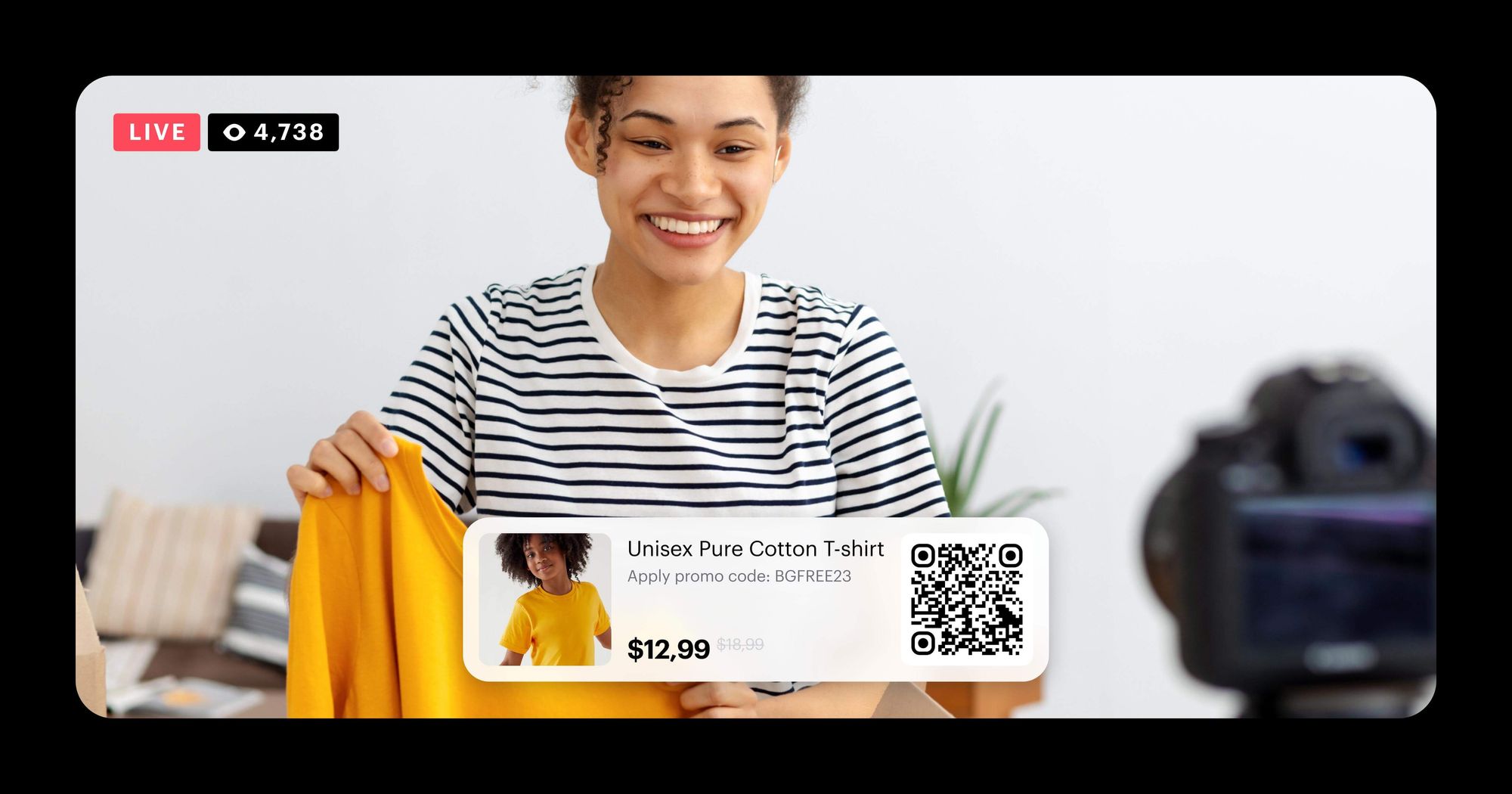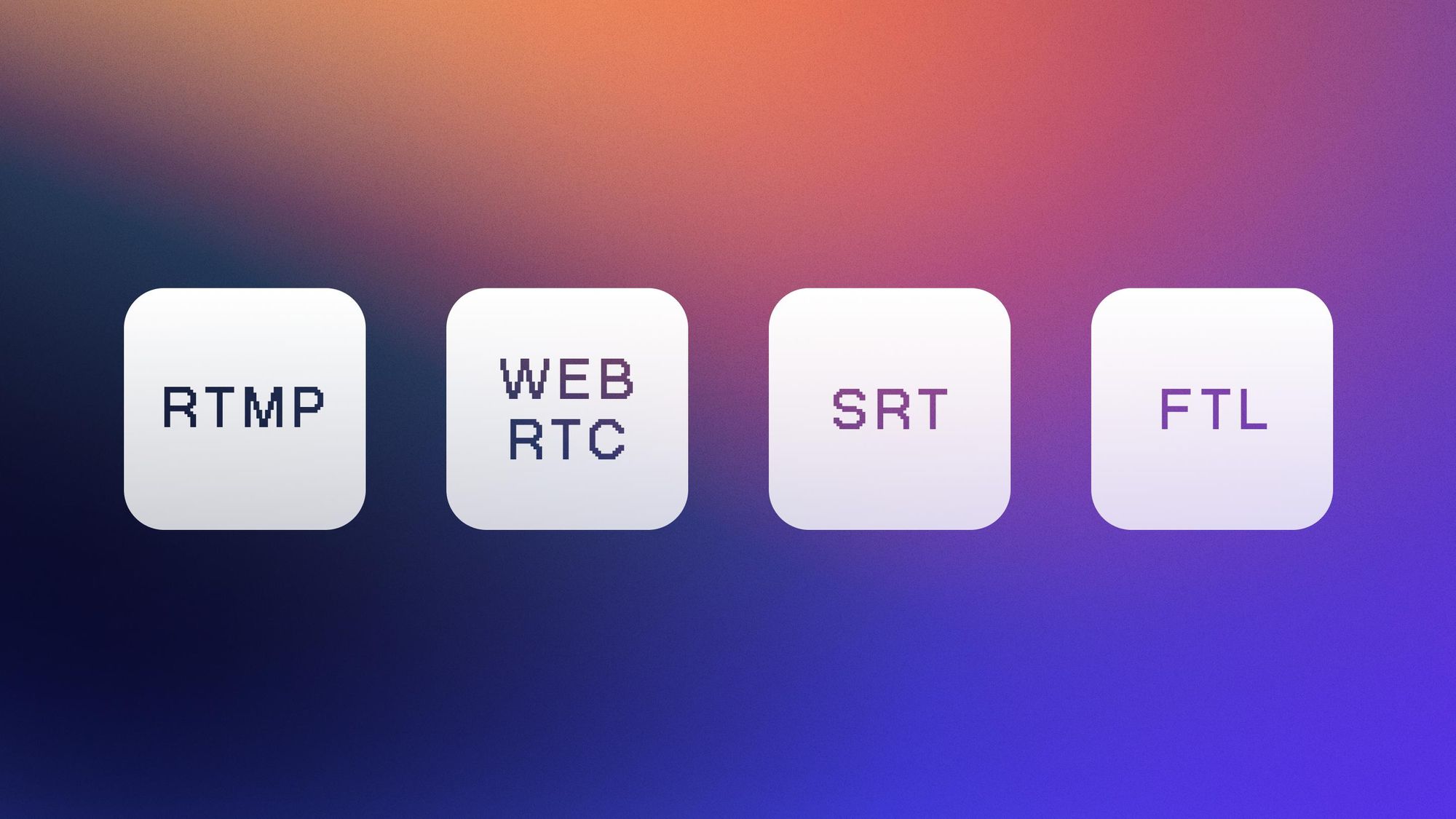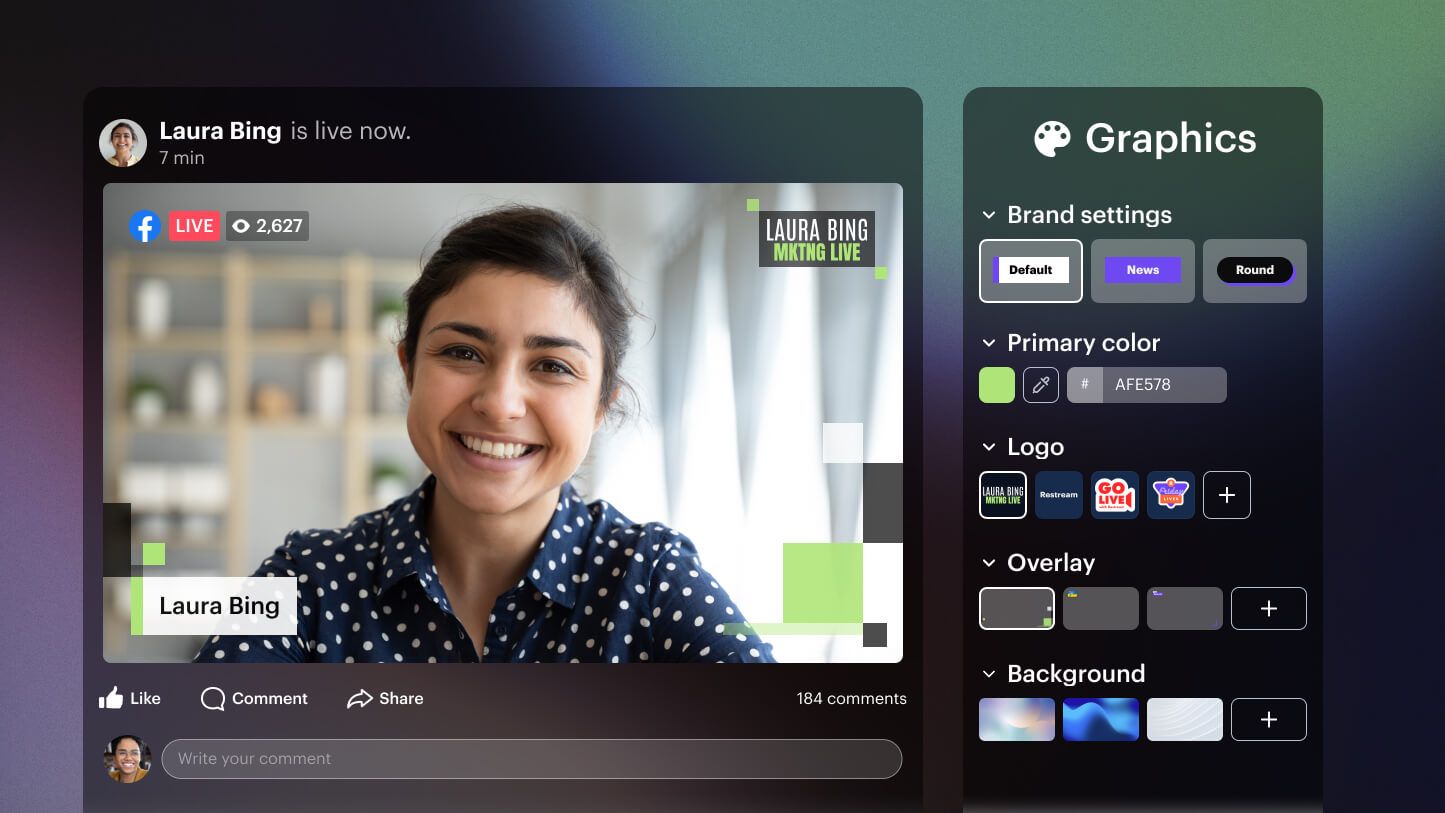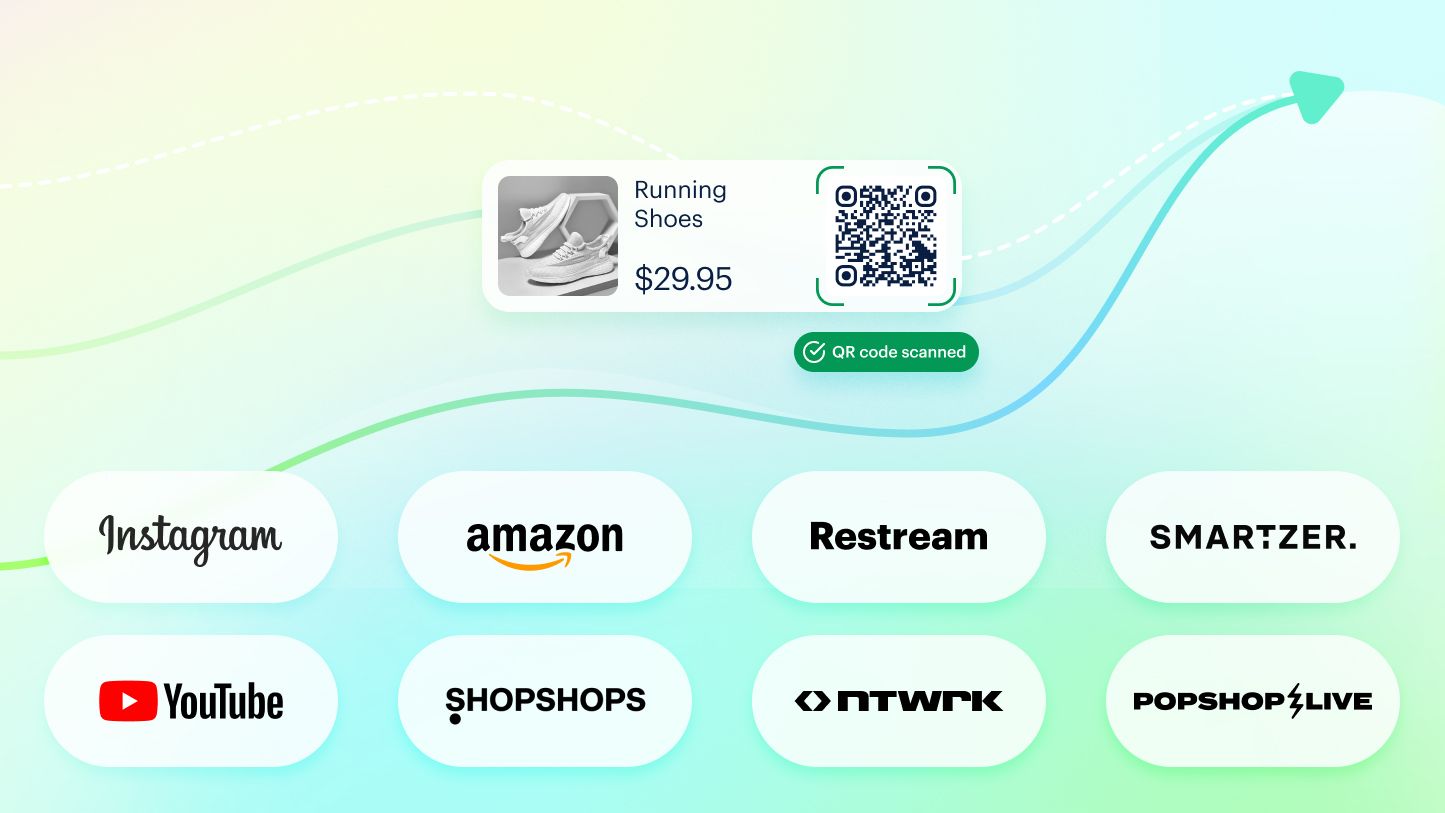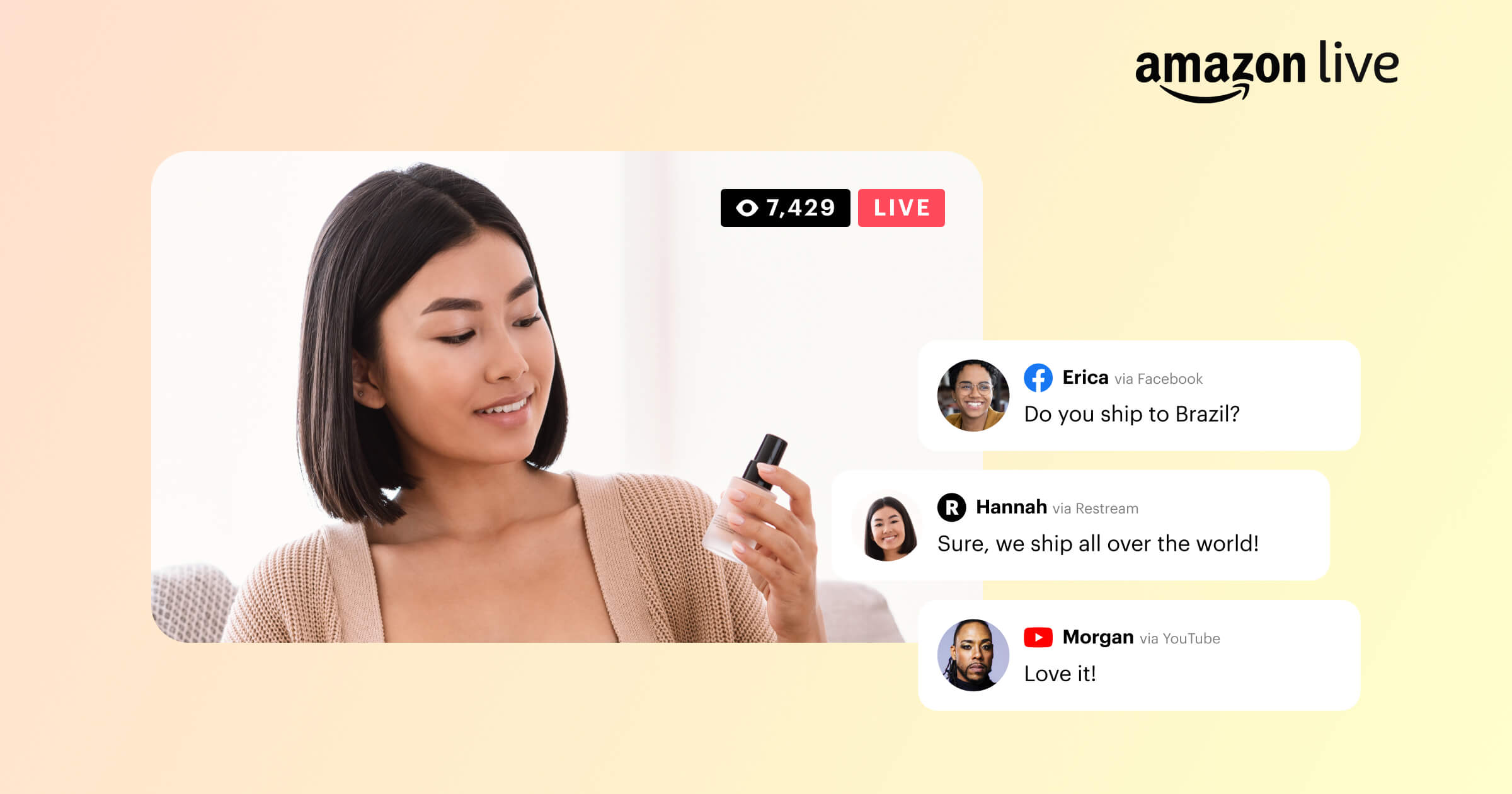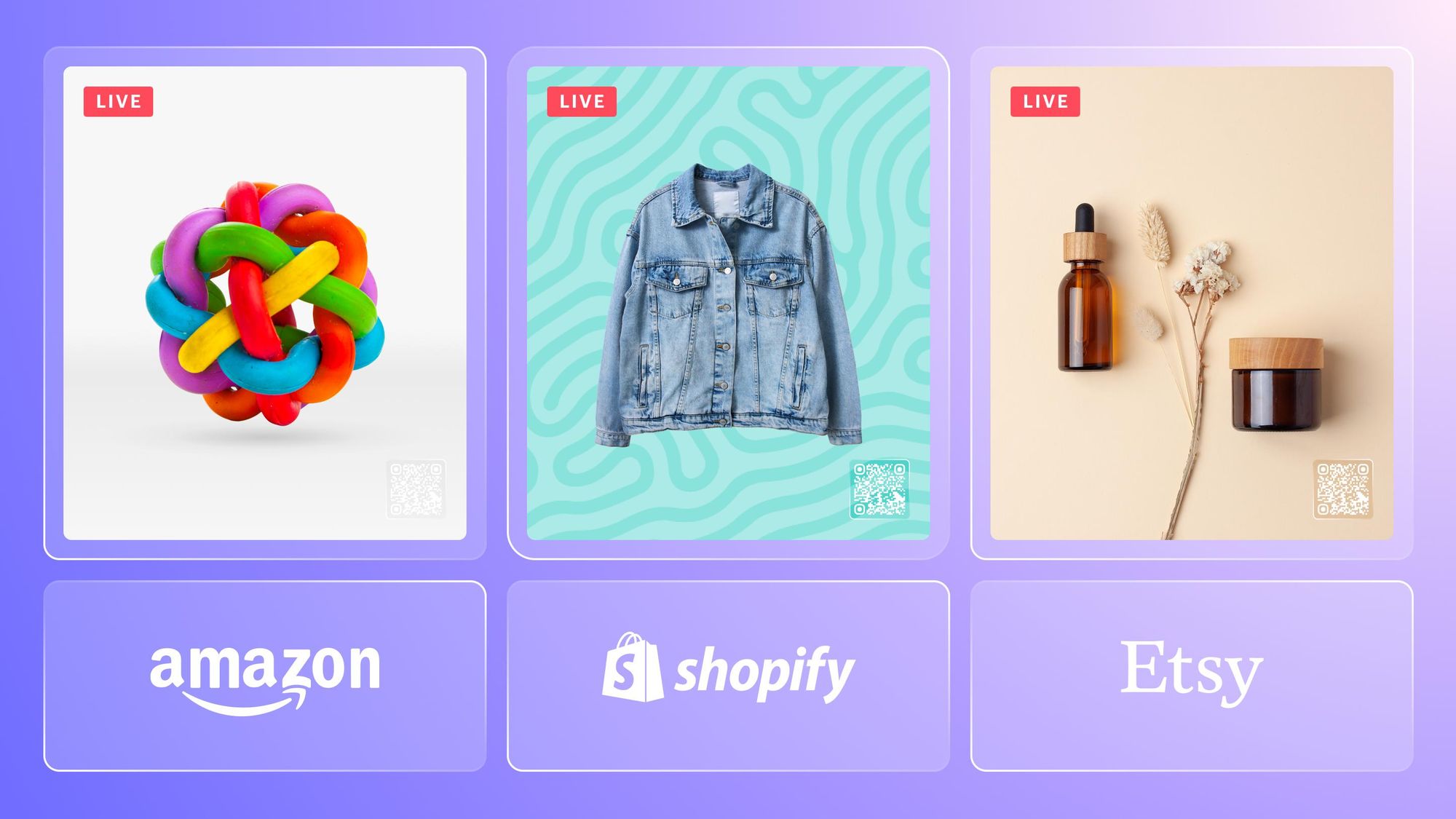E-commerce doesn’t like to stand still for too long. It’s an industry based on disruption, always turning out new and better ways of doing business online. Combining online retail with another booming industry — live streaming — is one of these new developments that has shown promising results. Live stream e-commerce is still relatively new to markets outside of East Asia, so if you’re interested in using live video to boost e-commerce sales but aren’t sure how, you’re not alone.
This guide is your crash course in live commerce, covering all the basics including why you should start streaming for e-commerce and platforms to consider when you do.
What is live commerce?
Live commerce is the combination of live streaming and online shopping. Viewers can tune into a live video with the option to purchase products they see in-stream with a single click. A key component of live commerce streaming is the engagement with viewers. They can chat, send reactions and ask questions in real time — with the convenience of ordering products online.
A brief history of live e-commerce
Live e-commerce got big in China before anywhere else, thanks to Alibaba’s 2016 release of Taobao Live, a live shopping platform. Other platforms followed not long after, including Douyin (TikTok) and Kuaishou (Kwai). Live commerce took off in China because more than 25% of the country’s physical goods retail sales happen online (compared to the global average of 18%).
Some U.S. and European brands have started marketing their goods to the Chinese live streaming market, but platforms didn’t start taking off in the West until recently. Instagram has made live streams shoppable for the last few years, and TikTok and YouTube are introducing more live commerce features in 2023. Dedicated live shopping platforms have started gaining steam as well, most notably Amazon Live. Other platforms like TalkShopLive have made a name for themselves by partnering with high-profile influencers and celebrities.
Live commerce is poised to take off in Europe and North America, and if your brand hops on the trend now, you’ll be ahead of the curve.
The benefits of live streaming commerce
E-commerce has surged in recent years, primarily due to the COVID-19 pandemic. Global e-commerce rose from 15% of all sales in 2019 to 22% in 2022. The market is projected to grow to a whopping $5.4 trillion in 2026. There’s no denying those numbers — e-commerce is a good market to be in right now. But with more retailers flocking to the online sales model, your brand needs a way to stand out. Live stream commerce can help with that.
There are several benefits to live commerce, including:
- People already spend a lot of time online. The average internet user spent six hours and 53 minutes online per day by the end of 2021. And by 2023, U.S. adults are forecasted to spend one hour and 20 minutes per day of their online time watching digital video.
- Live commerce improves the customer experience. People want to navigate stores more easily, have access to knowledgeable salespeople, and pay quickly and painlessly. Live shopping streams achieve all of those things, producing less friction for customers and making them more likely to purchase.
- More customers want personalized shopping. The social aspect of live commerce is a key driver to its success. Live streams can easily become conversations where viewers’ opinions are heard and valued. People like buying from people, and live commerce streaming creates loyal buyers who show up again and again for a personalized shopping experience.
- Live commerce turns viewers into buyers. Live stream commerce boosts sales because you can expose your products to thousands of viewers in minutes, with minimal effort. The return on investment (ROI) from a live commerce stream is high and when you make sales, you have something to show for your efforts.
- Live commerce improves brand awareness. Live streaming your products adds another channel to promote your products on — and it’s less expensive than social ads. While the rest of your competitors are paying for Facebook ads, you can get out in front of the competition with a cool new way to sell.
Brands have been using live streaming for a while. Some, such as Kohl’s, were early adopters that centered their live videos on branding. Others, like Home Depot, partnered with celebrities to create special sponsored live stream events aimed at sales.
A more recent example includes Nordstrom’s live stream shopping initiative, which has led to more than 50 virtual shopping events featuring a wide variety of brands. Coffee and tea company Quivr hosts live commerce streams on Amazon which, according to Quivr’s co-founder Ash Crawford, increase sales by almost 150% in the 24 hours following the stream.
How to use live streaming for e-commerce
There are several ways you can leverage live streaming to achieve your business goals. To start using live streaming to make sales, you have to choose the right products or services and select a live shopping platform.
Choosing the right products to feature
You can’t showcase every single product on your live commerce streams, at least not at first. Pick your bestsellers, end-of-season sale items, or even your worst performers to give them some more attention. There’s no right way to do it, as long as you don’t choose products at random. If you have a limited product line, you’ll have to get creative with how you structure your live shopping sessions — but don’t worry, we’ve got some suggestions for you on that below.
Picking the right live commerce platform
When it comes to where you want viewers to watch your live commerce videos, you have two options:
- Social media platforms with shoppable features. Instagram and YouTube are the two major social networking platforms that have live commerce right now, although TikTok has announced it will allow live shopping features very soon too. Hosting a live commerce stream on social media lets you take advantage of the following you already have.
- Dedicated live streaming platforms. Platforms like Amazon Live, Popshop, TalkShopLive and ShopShops have live shopping as their primary function. These types of apps also emphasize connection with your audience and give viewers plenty of ways to interact with your stream.
- Your own Shopify store. If you already have a Shopify store, you can use a live streaming tool like Restream to display your products in your live videos. By streaming on your own website, you have more control over customization and viewer experience with your live commerce stream.
Live streaming e-commerce with Restream
Restream’s browser-based live streaming studio integrates with Shopify and your Amazon storefront so you can supercharge sales with live shopping. With Restream live shopping, you can:
- Turn your views into sales: Get more than reactions and comments on your live streams — make sales. Your viewers get the satisfaction of purchasing a new product and you boost your ROI.
- Promote your store: Making shoppable videos adds another marketing channel for your online store, letting you start your very own home shopping network and engage more with your customers.
- Join a $35 billion industry: Live commerce is on the rise and it’s predicted that by 2024, e-commerce revenue from live online shopping will reach $35 billion. Join the live commerce revolution and start making more sales with Gen Z and Millennials.
Types of e-commerce live streams
Live commerce streams can take a variety of formats. The best one for your brand will depend on what you’re selling and what kind content your audience wants to see. Here are some common examples:
- Behind-the-scenes live video is great for humanizing your business, but it also has an air of exclusivity, making it very engaging.
- Interviews and Q&As are great live content for conversion because they engage, inform and promote communication.
- Product launches can help boost sales. You can stream special programming in support of your flash sales, too.
- Live auctions are exciting and bring out people’s competitive side. They’re an engaging way to generate more sales and hype for your products.
- Live training sessions and workshops or content centered on the community provide that little extra to your customers and make them feel appreciated by your brand.
- Influencer collaborations bring some star power to your stream and let you tap into the influencer’s audience for bigger viewership.
Current live commerce trends
Live commerce is still catching on but at some point you’ll need more than just live video to keep customers engaged. Hop on these four live shopping trends sooner rather than later and keep your competitive edge.
Multistreaming
Get as much use out of your live commerce videos as possible by streaming them to multiple networks. By live streaming to multiple channels with Restream, you can go live on a live commerce platform like Amazon and TalkShopLive as well as social media destinations like Facebook, YouTube and Twitch. Not all your customers will prefer to watch you on the same platform, so give them the choice to join your stream where they’re most comfortable. You should also make your stream shareable so viewers can invite their friends, make the purchasing process as frictionless as possible, and repurpose clips of the live video for later use on other channels.

Get more views with multistreaming
Reach more people, and meet viewers where they like to watch. Live stream to YouTube, Instagram, Facebook, Twitch, X, TikTok, LinkedIn, and more at once.
One-on-one live shopping
Give your viewers the ultimate personal shopping experience by hosting one-on-one live chats and consultations. Although streaming to a larger audience increases the chances of making more sales, setting up live calls with a single customer provides that person with custom advice and expertise. When the customer sees how willing you are to provide value, they’re more likely to purchase your products.
Virtual reality and the metaverse
Live videos with virtual and augmented reality take the shopping experience to the next level. Viewers can see clothes, furniture, electronics and all kinds of physical goods from multiple angles and even “try them on” with augmented reality. Ikea lets people design rooms in their home with augmented reality and Taobao lets you create an avatar to go virtually shopping with your friends’ avatars. In the coming years, QVC-like shopping videos won’t be enough and customers will crave fully immersive digital experiences.
Blockchain and NFTs
The retail sector has already started embracing blockchain, cryptocurrency and non-fungible tokens (NFTs). It’s only natural that these technologies will be adopted by live e-commerce as well. Some live shopping platforms like NTWRK have blockchain built into their shopping models, allowing users to buy and sell NFTs in addition to physical goods. Brands like Nike and Gucci offer virtual shoes, and purchasing virtual apparel for an online avatar is becoming more and more common.
7 tips for successful live stream commerce
Adopting live commerce for your brand will get you ahead of the game, but you’ll need to implement some successful live e-commerce streaming strategies if you want to stay ahead. Keep these tips in mind as you map out your approach to live stream commerce.
1. Choose a format and theme
Live commerce events can take different shapes: Q&As, product demos, interviews, contests and much more. Figure out what type of stream works best for the products you want to showcase, or what your audience would find the most engaging.
It also helps to have a theme. If you’re a brand selling your own products, your niche or theme is pretty much picked for you — if you sell gaming accessories then your live session should be about gaming. If you’re an influencer who curates products from multiple brands, choose a niche and stick to it. Don’t feature camping gear or electronics if you’re a fashion influencer. Be consistent.
2. Plan ahead
People love the spontaneity of live videos, but that doesn’t mean you should go in without a plan. Make an outline, or run of show, for your live stream so you know the following ahead of time:
- Which products to feature and in what order
- How many segments your live commerce stream includes and how long they last
- When to play pre-recorded video clips (for intros, sponsor breaks or other content)
- What questions you’ll ask your guests, if you have them
- When you’ll run a live poll or other engagement activity for viewers
You don’t have to script the whole thing, but you should know the order of each segment of your live show. Rehearsing ahead of time isn’t a bad idea either. And don’t forget to make a backup plan in case something goes wrong.
3. Use engagement features
Viewers are joining your live commerce stream for the interaction, so engage with them! Use some of these strategies for keeping people interested:
- Run a few polls throughout the stream
- Ask people in the chat to say where they’re watching from at the beginning of the event
- Always greet people when they say hi in the chat
- Do a Q&A session and pick questions from the chat to answer live
- Auction off one of your limited-edition products
- Play games or host a contest/giveaway
4. Do limited-time offers
Live streams capitalize on FOMO (fear of missing out) so take advantage of it and offer a discount that’s only available until the end of the live session. These kinds of offers not only create a sense of urgency that encourages people to purchase but they also make the viewers of your live shopping video feel like they got an exclusive deal.
5. Collaborate with influencers
Get an influencer who’s familiar with your products or niche to host your live commerce event for you. They can promote it on their channels and bring their audience to your live stream, increasing the potential for sales. It’s important to choose the right influencer or celebrity for your live commerce video. Make sure it’s someone who has genuine interest in your products or some knowledge about your particular industry.
6. Promote your live shopping events
Planning your live e-commerce streams in advance gives you the opportunity to promote them across all of your channels. Get a shareable link to the event and post it on your social media networks, drop it in your email newsletter or feature it on your website. Make sure your existing customers know all about it — and mention if you’re having in-stream discounts too.
7. Multistream
Don’t limit yourself to one live commerce platform. Send your broadcast to multiple destinations at once, including your social media channels or your own website. The more places your live stream commerce event appears, the more chances there are for viewers to see it. Restream can push your live video to Facebook, YouTube, Twitch, Twitter and several other websites that have a live streaming function.
Let’s wrap it up!
The worlds of e-commerce and live streaming are incredibly dynamic, especially where they overlap. Live video content is very much in-demand, and you have plenty of ways to use it to address consumers on their journey towards becoming customers. Live streaming is the logical next step for e-commerce and the two are becoming more integrated. You can’t afford to miss out on live e-commerce streaming because it’s the future of retail.

